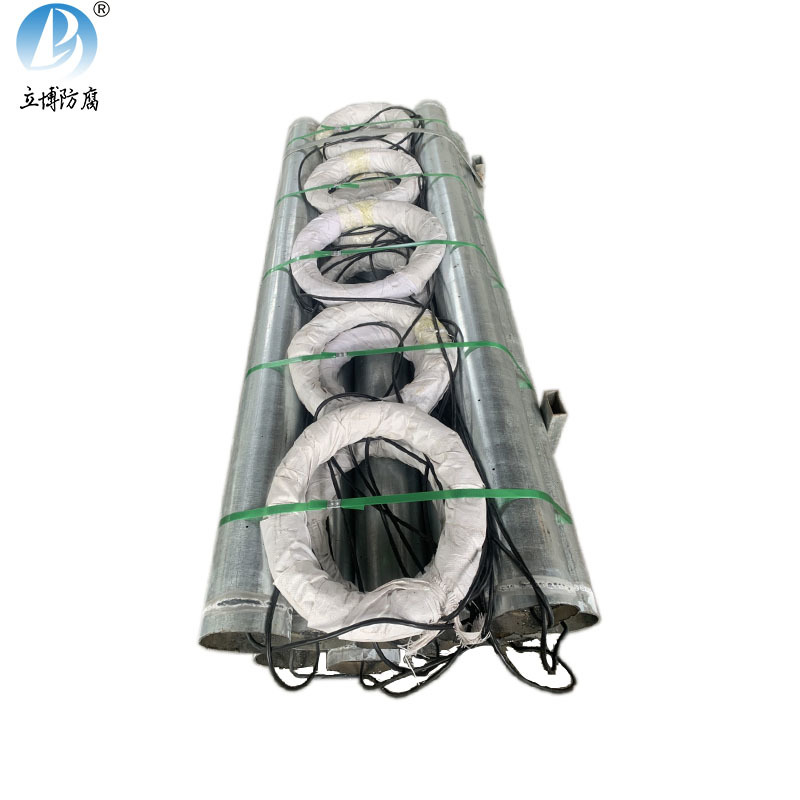How Bracelet-Type Zinc Anodes Enhance Durability in Construction Materials
Release time:
2025-04-14
How Bracelet-Type Zinc Anodes Enhance Durability in Construction Materials Table of Contents 1. Introduction to Bracelet-Type Zinc Anodes 2. Understanding Corrosion in Construction Materials 3. What Are Bracelet-Type Zinc Anodes? 4. Benefits of Using Bracelet-Type Zinc Anodes 5. Applications of Bracelet-Type Zinc Anodes in Construction 6. Installation Techniques for Optima
How Bracelet-Type Zinc Anodes Enhance Durability in Construction Materials
Table of Contents
- 1. Introduction to Bracelet-Type Zinc Anodes
- 2. Understanding Corrosion in Construction Materials
- 3. What Are Bracelet-Type Zinc Anodes?
- 4. Benefits of Using Bracelet-Type Zinc Anodes
- 5. Applications of Bracelet-Type Zinc Anodes in Construction
- 6. Installation Techniques for Optimal Performance
- 7. Case Studies: Success Stories in Durability Enhancement
- 8. Frequently Asked Questions (FAQs)
- 9. Conclusion
1. Introduction to Bracelet-Type Zinc Anodes
In the construction industry, ensuring the longevity and durability of materials is paramount. One effective solution to combat the detrimental effects of corrosion is the use of **bracelet-type zinc anodes**. These innovative anodes serve as a protective layer, significantly enhancing the lifespan of various construction materials. In this article, we will delve into the mechanics of how these anodes work, their applications, and their undeniable benefits.
2. Understanding Corrosion in Construction Materials
Corrosion is a natural process that deteriorates metal surfaces, leading to structural weaknesses and failures. In construction, common materials such as steel and concrete are particularly susceptible to corrosion. Factors such as moisture, salts, and environmental conditions exacerbate this degradation. Understanding the mechanisms of corrosion is essential for implementing effective preventive measures.
The Cost of Corrosion
Corrosion does not just compromise the integrity of materials; it can also lead to substantial financial losses in repairs and maintenance. According to various studies, the economic impact of corrosion can amount to billions annually. This makes it crucial for professionals in the construction industry to adopt strategies that mitigate these risks.
3. What Are Bracelet-Type Zinc Anodes?
Bracelet-type zinc anodes are specially designed components made from zinc, which is a highly reactive metal. These anodes are connected to susceptible structures and act as a sacrificial layer. When exposed to corrosive elements, the zinc oxidizes instead of the underlying metal, effectively protecting it from degradation.
How They Function
When a bracelet-type zinc anode is installed, it creates a galvanic cell with the surrounding metal structures. This electrical process ensures that the zinc corrodes at a faster rate, preserving the integrity of the metal it's connected to. This sacrificial method is both efficient and cost-effective, making it an ideal choice for various construction applications.
4. Benefits of Using Bracelet-Type Zinc Anodes
The integration of bracelet-type zinc anodes offers numerous advantages that enhance the durability of construction materials:
Corrosion Prevention
The primary function of zinc anodes is to **prevent corrosion**. By sacrificing themselves, they protect critical metal components, ensuring the longevity of structures.
Cost-Effectiveness
Investing in bracelet-type zinc anodes can lead to significant cost savings over time. Reduced maintenance and repair needs translate into lower operational costs for construction projects.
Environmentally Friendly
Zinc is a non-toxic metal, making it an environmentally friendly option for corrosion protection. Its use aligns with sustainable construction practices.
Versatility
Bracelet-type zinc anodes can be utilized in various applications, from marine constructions to pipelines and bridges, showcasing their versatility across different construction sectors.
5. Applications of Bracelet-Type Zinc Anodes in Construction
The adaptability of bracelet-type zinc anodes allows for their implementation in numerous construction contexts. Here are a few notable applications:
Marine Structures
In marine environments, where exposure to saltwater accelerates corrosion, zinc anodes are crucial. They protect docks, piers, and boats from the harsh effects of the sea.
Pipelines and Tanks
When it comes to pipelines and storage tanks, zinc anodes prevent the corrosion of underground and submerged structures, extending their operational life.
Bridges and Overpasses
In bridge construction, incorporating zinc anodes can safeguard steel components, thereby enhancing safety and durability.
6. Installation Techniques for Optimal Performance
Proper installation of bracelet-type zinc anodes is essential for maximizing their effectiveness. Below are key considerations and techniques:
Surface Preparation
Before installation, surfaces must be cleaned thoroughly. Removing rust, dirt, and oils ensures proper adhesion and enhances the performance of the anodes.
Correct Positioning
Anodes should be strategically placed to ensure even distribution of protection. Engaging a professional for accurate placement can yield better results.
Regular Inspection
To maintain their efficacy, anodes should be inspected regularly. Monitoring their condition helps in determining when replacements are necessary.
7. Case Studies: Success Stories in Durability Enhancement
Examining real-world applications provides insight into the effectiveness of bracelet-type zinc anodes:
Case Study 1: Coastal Marine Project
In a coastal marine construction project, the use of bracelet-type zinc anodes resulted in a **40% reduction in maintenance costs** over five years compared to similar projects without anodes.
Case Study 2: Urban Bridge Restoration
In an urban area, an aging bridge was restored using zinc anodes. The project team reported improved longevity of the steel structure, with corrosion rates dropping significantly.
8. Frequently Asked Questions (FAQs)
What are the signs that a zinc anode needs replacement?
Common signs include visible corrosion or significant wear on the anode itself. Regular inspections are crucial to identify these indicators early.
Can zinc anodes be used in all environments?
While zinc anodes work effectively in many environments, their performance may vary based on local conditions. Consulting with a corrosion expert can provide tailored recommendations.
How long do bracelet-type zinc anodes last?
The lifespan of zinc anodes varies based on environmental exposure and the specific application. Typically, they last between 3 to 5 years before needing replacement.
Are there alternatives to zinc anodes?
Yes, other options include magnesium and aluminum anodes. Each has its unique properties and suitability depending on the application.
How do I ensure the best performance of zinc anodes?
Regular maintenance, proper installation, and environmental assessment are key to optimizing the effectiveness of zinc anodes in protecting structures.
9. Conclusion
Incorporating **bracelet-type zinc anodes** into construction projects represents a forward-thinking approach to enhancing durability and longevity. Their ability to prevent corrosion not only protects structural integrity but also leads to significant cost savings in maintenance and repairs. By understanding their function, applications, and installation techniques, construction professionals can make informed decisions that benefit their projects in the long run. As the construction industry continues to evolve, embracing innovative solutions like zinc anodes will play a crucial role in developing resilient and sustainable structures.
Key words:
Learn more about industry dynamics
The company's main products: magnesium alloy sacrificial anode series, aluminum alloy sacrificial anode series, zinc alloy sacrificial anode series, and cathodic protection supporting products, such as more than a dozen varieties and hundreds of specifications.
Focus on the development and production of cathodic protection materials
online message
We will contact you within one working day. Please pay attention to your phone or email.








